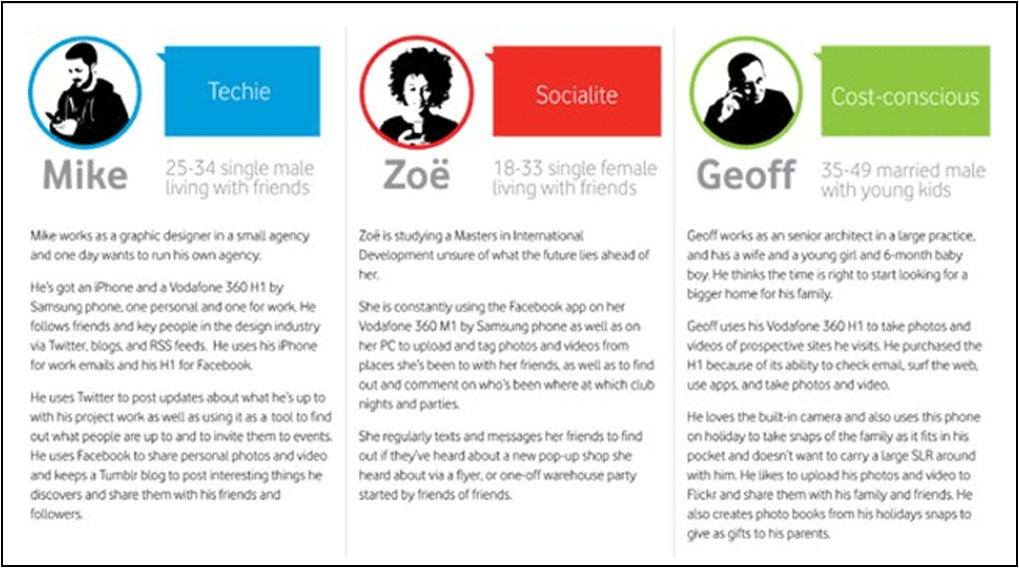Personas and User Narratives
Laying The Foundation In Business
Most entrepreneurs start out extremely optimistic and overly excited about their business idea.
It’s easy to jump right in, believing there will be a hungry audience for your outstanding product or service. You trick yourself into believing: “Hey, I’ve discovered a need that’s not being met. I’ve got what it takes. I’m going for it.”
And with those misguided thoughts, you’re off and running without due diligence.
Whoa. First things first.
Before embarking on any website development project, online marketing effort or advertising campaign, it’s vital to understand the needs and goals of your audiences as well as their behavioral patterns.
Reach Your Target Audience With Personas
So, what exactly is a Persona? The following description is paraphrased from wikipedia.
In marketing and user-centered design, personas are fictional characters created to represent the different user types within a targeted demographic, attitude and/or behavior set that might use your website, brand or product in a similar way.
Personas are useful in considering the goals, desires, and limitations of your users and help guide decisions about your products and services.
A user persona is a representation of the goals and behavior of a real group of customers. In most cases, personas are synthesized from data collected from interviews with users. They are captured in 1–2 page descriptions that include behavior patterns, goals, skills, attitudes, and environment, with a few fictional personal details to make the persona a realistic character.
For each product, more than one persona is usually created, but one persona should always be the primary focus for marketing and design.
Check out this article which also includes an example of a persona: How to Use the Power of Personas to Connect with Your Target Audiences.
Personas help you have a clear and succinct understanding of who your target market is. Personas help you decide which products, services and promotional materials you should be producing. Personas help you develop meaningful and relevant content that drives sales. Personas help you determine what content your audience would likely search for, subscribe to and share (in social media).
It’s also a good idea to market to someone’s potential (or who they want to be) vs. who they are right now. When Marlboro launched their Marlboro Man marketing campaign, they were targeting cowboy wannabes. The average Marlboro customer looked nothing like the man in the ads.
Having a deeper understanding of who that person is can be extremely helpful when formulating your business strategy.
Tell A Story Via User Narratives
Are you a good storyteller? If not, please learn or hire someone who can. Being able to articulate a user narrative is an important part of the business planning process.
I love listening to Stanford e-Corner podcasts whenever I can because I always learn something new about running my businesses. Just the other day, I listened to Jack Dorsey, co-founder of Twitter and Square Up, share his thoughts on the power of user narratives in one of those podcasts.
“Your user narrative should read like a play,” says Jack.
You have to get into the mind of your customer to write your narrative. They don’t have to be written in stone. They just have to be written. Consider them a work in progress which will continue to evolve and change over time as your company evolves and changes over time.
Here is another example of a narrative which demonstrates the detail and structure needed for it to be a thorough exercise. It’s important to note what a narrative is not:
“I went to the store. I got some milk. I checked out and went home.”
In this brief example, there is a character and setting, but there is no conflict. The story seems to not go anywhere.
In other words, when composing your user narratives for your business, be sure to ask yourself about the challenges your customers face and how your products and services solve those challenges.
Bottom Line?
Taking the time to write out (vs. think out) your user narratives and personas is critical for reaching a truly targeted audience. Otherwise, you’ll just be throwing darts with a blindfold on where your marketing efforts are concerned.

